Galería de Hans Ollermann
Oriental Institute, Chicago
2008_0923_190734AB Oriental Institute, Chicago
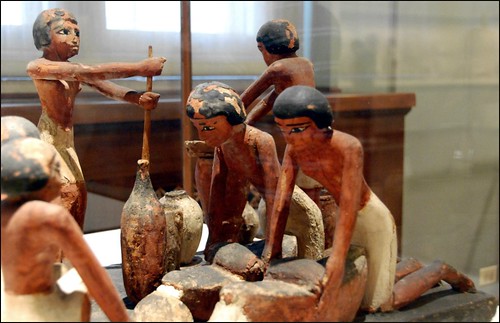
Treasures of the Oriental Institute, Chicago.
2008_0923_190829AB Oriental Institute, Chicago
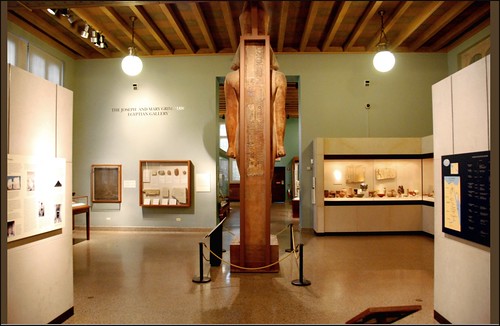
This statue of pharaoh Tutankhamun, one of two nearly identical colossal images, was excavated by the Oriental Institute in Western Thebes near the Temple of Medinet Habu.
It is 17 feet and 4 inches tall, and thus the tallest ancient Egyptian statue in the Western Hemisphere.. A gift of the Egyptian gouvernment to the Oriental Institute of the University of Chicago.
The other statue is in the Egyptian Museum, Cairo.
(Camera: Nikon D80)
2008_0923_184627AB Oriental Institute, Chicago
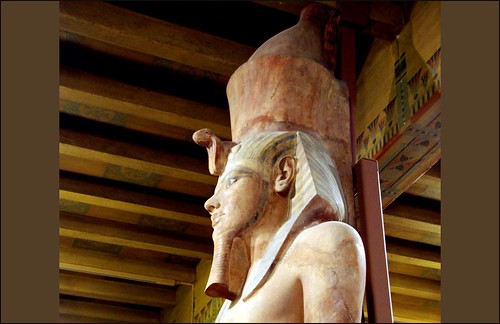
This statue of pharaoh Tutankhamun, one of two nearly identical colossal images, was excavated by the Oriental Institute in Western Thebes near the Temple of Medinet Habu.
It is 17 feet and 4 inches tall, and thus the tallest ancient Egyptian statue in the Western Hemisphere.. A gift of the Egyptian gouvernment to the Oriental Institute of the University of Chicago.
The other statue is in the Egyptian Museum, Cairo.
(Camera: Nikon D80)
2008_0923_183222AB Oriental Institute, Chicago
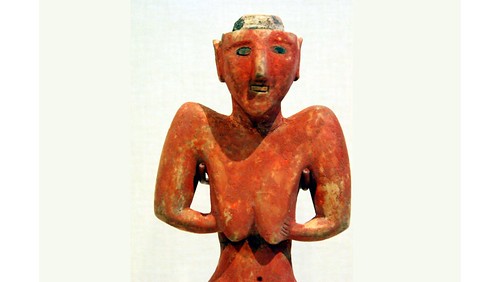
Figurine from Fakhariyah.
Ancient Mesopotamia ( Iraq).
Oriental Institute, Chicago.
2008_0923_183205AB Oriental Institute, Chicago
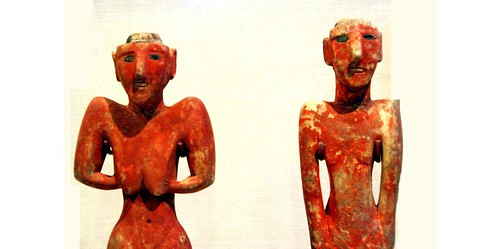
Figurines from Fakhariyah.
Ancient Mesopotamia ( Iraq).
Oriental Institute, Chicago.
En la tarde de hoy día 29, en la Casa de la Cultura, se han clausurado las II Jornadas de Egiptología, que se han celebrado durante los cinco días de esta semana, en la ciudad Malagueña de Fuengirola. Al acto de clausura, han asistido el Concejal de Cultura y el Director del Centro, que han entregado a los conferenciantes y al fotógrafo de la exposición unos recuerdos de las Jornadas.
La conferencia que ha cerrado el ciclo de cinco, ha sido una exposición magistral de la Vocal de Cultura de la Asociación Española de Egiptología, Rosa Pujol, quien con una esplendida presentación, nos ha introducido en la tumba del rey Tutanjamón. Allí, nos ha mostrado el ajuar y tesoro funerario encontrado en la KV 62.
M. Teresa Soria Trastoy
Arqueóloga
Asociación Andaluza de Egiptología (ASADE):
http://www.egiptologos.com/
http://old.ae4all.org.uk/
sábado 30 de enero de 2010
[AE-ES] II Jornadas de Egiptología en Fuengirola
Mercedes Montes Nieto
Tutankhamun's Treasures - Alabaster Jars
The final of the four Heritage Key videos about Tutankhamun's treasures.
Tomb of Birds and Giza Cave System
Wednesday, 4 November 2009
Basement of Egyptian Museum in Cairo
We are therefore faced with 3 features not explained by the Hawass family tree:
- KV55 cannot be Akhenaten if Ankhesenamun (or one of her sisters) is the mother of the two foetuses found in tomb KV62.
- There is a very strong probability that Thuya is the ancestress of the foetuses (and KV21A) other than via Amenhotep III.
- There is a strong probability that Amenhotep III is the great-grandfather of the foetuses (and grandfather of KV21A) not via Tutankhamun.
It should be noted again that we are working with limited data on only 8 alleles, two of which have revealed little information about the foetuses and their mother(s). To some degree any family tree must be tentative; however, I do not believe that the putative family tree presented in the JAMA paper is a good fit for the findings, and certainly not the best fit. Moreover, I propose that a classic chronology does fit the data and we could envisage a family tree as follows in Figure 1. (My apologies, Word is a terrible word processor when it comes to constructing family trees.)
![[Tut-Family-Tree.png]](https://blogger.googleusercontent.com/img/b/R29vZ2xl/AVvXsEjPMKa2m9RXeu4IEWL41guh-WCcso8YRx7tyASDqxcF7_86AjlfaljUN2lc1gfQkYNXs2k7SzZ-tV-VtxLcm8d4cFTocCrJyAinZvXeuWwrIuH_FwvwE0meoBbZUmO_wN-EZRJaNoiRn4I/s1600/Tut-Family-Tree.png) |
| Figure 1: Hypothethical Family Tree |
If we identify the KV55 mummy as Smenkhare and assume that Akhenaten remains missing, we can add Akhenaten and Nefertiti into the family tree, while retaining KV55 (Smenkhare) as the father of Tutankhamun as shown by the Hawass team. It’s tempting to consider that KV21B and the Younger Lady are also daughters of Akhenaten and Nefertiti. While not essential for my revised theory, this would neatly fit historical facts. In considering whether the DNA data would fit the revised family tree, it seems appropriate to consider that KV21B and the Younger Lady may also have been daughters of Akhenaten and Nefertiti as this represents the tightest constraint. That is, if the DNA data fits an assumption that these two queens/princesses were also daughters of Akhenaten and Nefertiti then if they aren’t daughters the theory wouldn’t be invalidated.
Table 1, above, shows that it is possible to build a family tree with all these constraints and predict the DNA of Akhenaten and Nefertiti. In the JAMA paper, the Younger Lady is shown as a daughter of Amenhotep III and Queen Tiye. Table 1 shows that it is equally possible for her to be a daughter of Akhenaten ie a niece of Amenhotep III. I have written before that the JAMA paper ignored how consanguinity can change the probability of relationships and could wrongly conclude that a particular relationship was proven, when other relationships were possible.
(Note, if any of these constraints are removed, a greater range of possibilities exist for the DNA of Akhenaten and Nefertiti. Conversely, if their mummies are found and DNA extracted, then the findings might eliminate the Younger Lady and or KV21B from consideration as their daughters.)
Tomb of the Birds

Añadido por Mari Carmen
a "Asociación Andaluza de Egiptología (ASADE)"
If you prefer text, Dr Hawass has written about it on his blog.
##########################################
RSS Feed de Amigos de la Egiptología
http://www.egiptologia.com/index.php?format=feed&TYPE=rss
##########################################
Foro de Discusión sobre el Antiguo Egipto
http://www.egiptologia.com/foro
Recomendamos: Proyecto Dinástico
http://www.tierradefaraones.com
--------------------------------------------------------------
LISTA DE DISTRIBUCIÓN DE AMIGOS DE LA EGIPTOLOGÍA - AE
Gestión Altas-Bajas y consulta mensajes enviados:
http://www.egiptologia.com/lista-de-distribucion.html
Moderador: Víctor Rivas egiptologia@egiptologia.com
Amigos de la Egiptología: http://www.egiptologia.com
Los mensajes de Amigos de la Egiptología son distribuidos gracias al apoyo y colaboración técnica de RedIRIS Red Académica Española - http://www.rediris.es

No hay comentarios:
Publicar un comentario